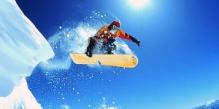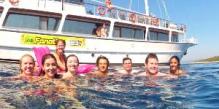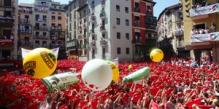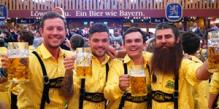'Real' Sydney-Hobart winners TBA
While big budgets and hi-tech equipment decided the glamour end of the Sydney to Hobart yacht race on Saturday, the battle for overall handicap honours continues overnight.
The official winner will not be super maxi Alfa Romeo, which took line honours in the third fastest time on record, but whoever wins the Tattersalls Cup.
Three yachts, including one of the smallest and slowest, are in contention for what many yachties regard as the real prize.
The handicap winner is decided through a complicated formula called the International Measurement System (IMS), which takes into account boat and sail size and crew numbers -- in other words, it equalises the field and rewards the best sailors.
In 57 previous Sydney-Hobarts, only six boats have won line and handicap honours.
Of the boats this year to have finished, Quest was the one to beat.
Computer projections showed Impeccable and Zeus II as the only boats at sea likely to challenge. Zeus II, at a mere nine metres, is second last in the field.
Impeccable must finish by 45 minutes after midnight to take over the lead, while Zeus II has until 10.08am on Sunday.
Alfa Romeo's decisive and expected line honours win was a triumph for Australasian blue water technology.
It was built for Sydney-based New Zealand businessman and sportsman Neville Crichton by John McConaghy of Mona Vale who's developed a reputation for building yachts from exotic materials.
The 27.43 super maxi is entirely carbon fibre -- including mast, boom and sails.
Alfa Romeo, or Shockwave as it then was, was taken to New Zealand to be rigged before being launched earlier this year and immediately winning everything it entered.
The boat cost an estimated $6 million and has an all-professional crew -- mainly Australians and New Zealanders -- of 23.
The scary thing about Alfa Romeo is that it can go a lot faster.
The international rules governing the Sydney-Hobart puts limits on what boats can carry, which meant Alfa Romeo could not use water ballast or its biggest sails.
Crichton estimates that when its sailing to its full potential, Alfa Romeo will do about 35 knots in the right conditions.
He'll have a chance to prove that at its next engagement, New Zealand's Millennium Cup, before taking it to Europe.
Given there was an inevitability about Alfa Romeo's win, the eye-catching performance was Grundig's in coming second, about an hour and three quarters behind.
Owner-skipper Sean Langman has had lousy luck in the last three races -- limping to Hobart after hitting a big fish in 1999 and pulling out after sustaining damage the last two years.
Grundig, at 18.18 metres, is about 10 metres shorter than the super maxis.
Yet the boat known as the skiff on steroids beat all the rest of them, including third-placed British boat Canon, at 29.49 metres the biggest ever to enter the race.
Langman was delighted with Grundig's performance and not disappointed to be beaten by the "superlative" Alfa Romeo.
"Grundig is a home-grown product built out of bits and pieces of other boats," he said.
"Under a million dollars in value. We have been vindicated."
While Langman was happy, Grant Wharrington, owner-skipper of fourth-placed Australian Skandia Wild Thing, acknowledged the march of technology.
He said his once ground-breaking 25 metre boat was now out of date and he was having a state-of-the-art replacement built for next year.
An international jury tomorrow will hear protests over two collisions at the start of the race that forced Valheru and Trumpcard out. They are against Peugeot Racing and Loki respectively.
They remain the only retirements from a starting field of 57 after what Wharington called a champagne sail.
 © 2025 AAP
© 2025 AAP















Post a comment about this article
Please sign in to leave a comment.
Becoming a member is free and easy, sign up here.